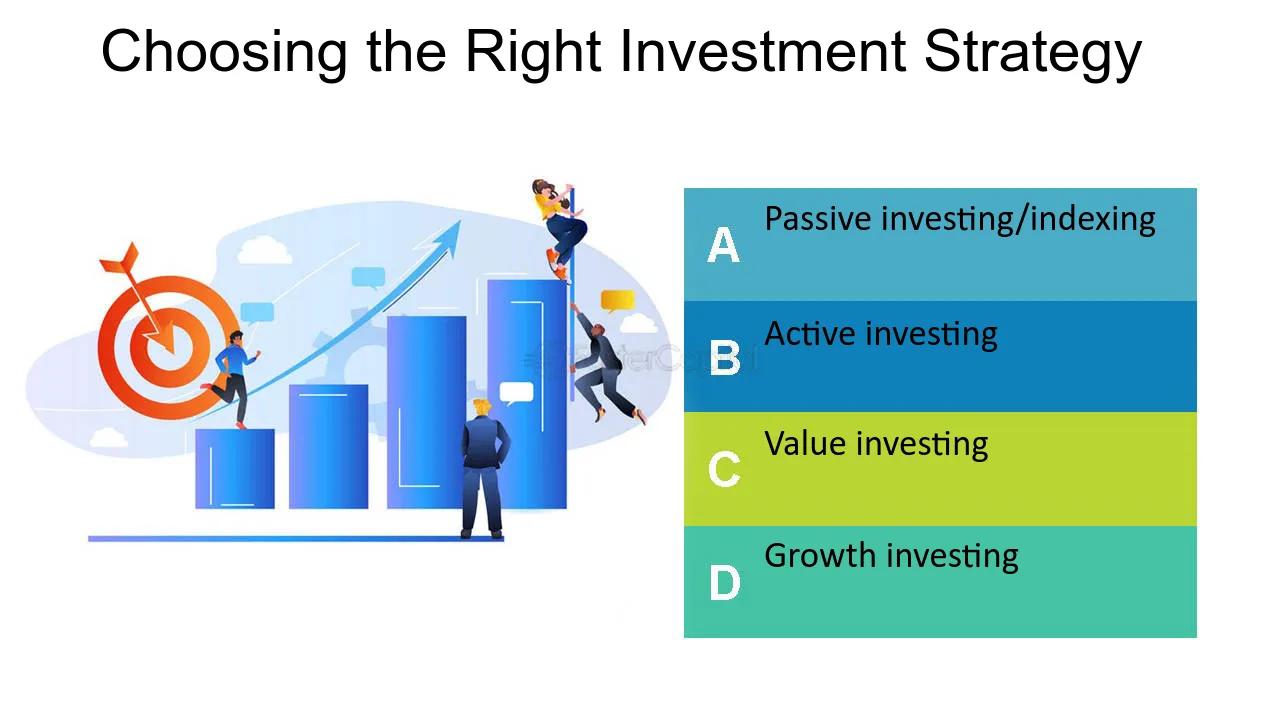Choosing the right investment strategy is a crucial step in achieving your financial goals. Whether you’re new to investing or experienced, finding a strategy that aligns with your risk tolerance, financial objectives, and time horizon is key to long-term success. Here’s a guide to help you make the right investment decisions.
How Do I Choose the Right Investment Strategy?
1. Define Your Financial Goals
Before selecting an investment strategy, it’s important to define your financial goals. Are you investing for retirement, a home, or short-term gains? Your goals will determine how aggressive or conservative your investment approach should be.
Examples of Financial Goals
- Retirement savings
- Buying a home
- Saving for college education
- Building an emergency fund
- Wealth accumulation for general purposes
2. Assess Your Risk Tolerance
Understanding your risk tolerance is essential when choosing an investment strategy. Risk tolerance refers to your ability to handle losses in your portfolio without panicking. Some investments are more volatile, while others are more stable but offer lower returns.
Types of Risk Tolerance
- Conservative: Prefers low-risk investments with modest returns (e.g., bonds, money market funds).
- Moderate: Comfortable with moderate risk for potentially higher returns (e.g., a balanced mix of stocks and bonds).
- Aggressive: Willing to take high risks for maximum returns (e.g., stocks, real estate, high-growth funds).
3. Determine Your Investment Time Horizon
Your time horizon refers to how long you plan to invest before you need access to your money. Longer time horizons can allow for more aggressive strategies since you have time to recover from market fluctuations.
Investment Strategies Based on Time Horizon
- Short-term (1-3 years): Consider safer, liquid investments like savings accounts or short-term bonds.
- Medium-term (3-10 years): Opt for a balanced portfolio with a mix of stocks and bonds.
- Long-term (10+ years): Higher-risk investments like stocks or real estate can offer greater returns over time.
4. Diversify Your Investments
Diversification is a key principle in investing that involves spreading your investments across different asset classes to reduce risk. A diversified portfolio helps protect you from major losses if one sector underperforms.
How to Diversify Your Portfolio
- Stocks: Invest in companies across various industries and regions.
- Bonds: Include a mix of government, municipal, and corporate bonds.
- Real Estate: Consider investing in real estate through REITs or direct ownership.
- Mutual Funds/ETFs: Choose funds that provide a range of investments in one package.
5. Understand Different Investment Vehicles
Different types of investments cater to different risk levels and goals. Understanding the types of investment vehicles can help you make an informed choice.
Common Investment Vehicles
- Stocks: Ownership in a company that offers higher returns but higher risk.
- Bonds: A loan to a company or government, providing fixed interest over time.
- Mutual Funds: A pool of investments managed by a professional, providing instant diversification.
- ETFs (Exchange-Traded Funds): Similar to mutual funds but traded like stocks on an exchange.
- Real Estate: Physical properties or REITs for income and appreciation potential.
- Commodities: Investing in physical assets like gold, oil, or agricultural products.
6. Keep an Eye on Fees and Costs
Investment fees and costs can eat into your returns over time. Be sure to understand the fees associated with each investment, whether it’s through a broker, fund manager, or trading platform.
Types of Investment Fees
- Management fees: Charged by mutual funds or ETFs for managing your investments.
- Trading fees: Fees charged by brokers when buying or selling stocks or funds.
- Expense ratios: Annual fees expressed as a percentage of your investment in a fund.
- Advisory fees: Fees charged by financial advisors for managing your portfolio.
7. Monitor and Adjust Your Strategy
Investing isn’t a “set it and forget it” process. Over time, your financial situation, risk tolerance, and goals may change. It’s important to regularly monitor your investments and adjust your strategy as needed.
When to Adjust Your Investment Strategy
- Major life changes (e.g., marriage, buying a house, retirement)
- Changes in income or financial stability
- Shifts in the economy or market conditions
- Approaching your investment time horizon
Conclusion: Choosing the Right Investment Strategy
Choosing the right investment strategy involves assessing your financial goals, risk tolerance, time horizon, and knowledge of various investment vehicles. By diversifying your portfolio and regularly reviewing your investments, you can create a strategy that aligns with your financial objectives and maximizes your potential for growth. Always stay informed and seek advice when needed to ensure long-term success.









